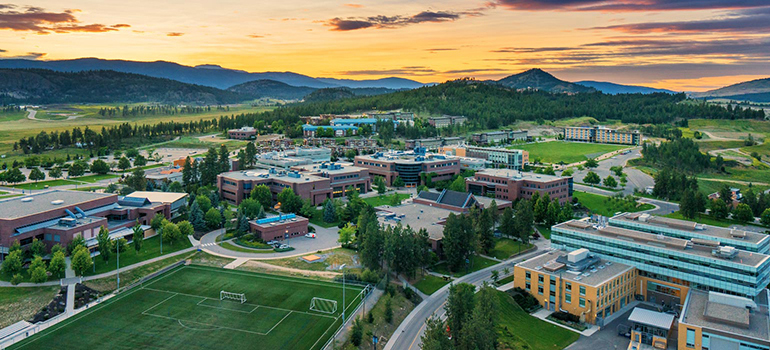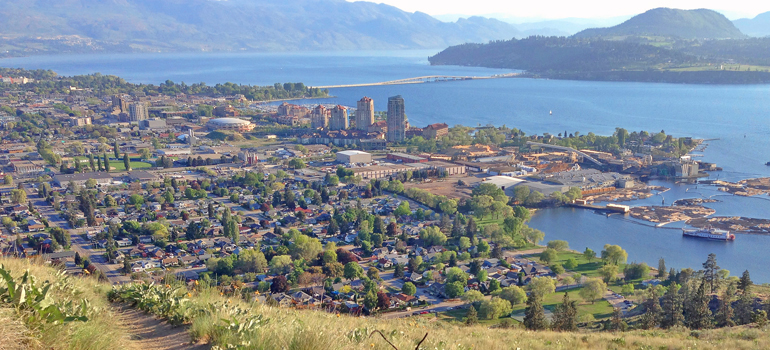Based at the University of British Columbia’s Okanagan Campus, The Recent History of Occupational Structure and Regional Economic Strategy in Non-Metropolitan Regions project brings together an interdisciplinary team of researchers, historians, economists, librarians, archivists, and community members.
UBC’s Okanagan Campus located in Kelowna, BC
Our interest in the history of occupational structure is rooted in a novel scholarly approach that uses quantitative data on occupations by settlement and thus regions, centred on work by The Cambridge Group for the History of Population and Social Structure at the University of Cambridge, UK (inter alia Wrigley, 2010; Shaw-Taylor, 2012). Historical analysis of occupations by settlement provides a basis for detailed appreciation of the economic, social, cultural, political and legal determinants of economic development, in a region as a whole and also in each of its settlements. Our project not only recognises the significance of the history of a region’s occupational structure in its own right but also contemplates the possibility that this history might be used as a catalyst for citizens to reflect on regional identity and capabilities, on the position of each settlement within the region, and consequently on their options for future economic development.
Our focus is on the Okanagan because it is an important region (for example, as an economic driver of the British Columbia Interior, and as one of the most prominent entrepreneurial regions of Canada), and because it is comparable and thus relevant to regions elsewhere (in Canada and the world). Uniquely positioned for comprehensive study, the Okanagan is a geographically delimited area whose emergence followed well-documented immigration occurring almost entirely since the late nineteenth century.
Downtown Kelowna from Knox Mountain
The economic success of regions is critically important for both the wellbeing of their citizens and the building of a nation. Many factors influence that success, including:
- The historical development of a region
- The perceptions of citizens about future prospects
One lens through which both economic history and future prospects can be appreciated is occupational structure. That is the lens used in this project.

